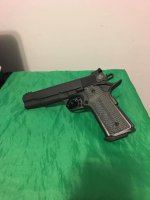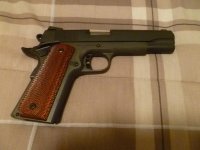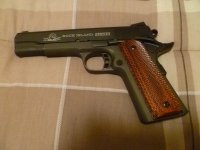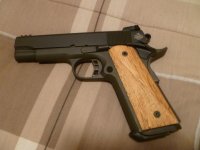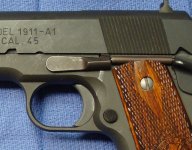MCorps0311
US Veteran
Last night I field striped my new RIA 1911-A1 FS Tact II 10mm. I broken it down and everything was okay till I tried to put the take down pin back in. This morning I took it to a Gunsmith and he had a problem putting the pin back too. He did get it done and it work just fine now. I won't try to clean it again and the gunsmith said he had a hard time getting it aligned with the little marking on the slide, I will take it to my gunsmith next time. Have anyone else had that problem with their RIA 1911-A1 FS Tact II 10mm? I busted up my hands trying to put it back together. All is good now but I couldn't sleep at all last night I was to upset.
Attachments
Last edited:

